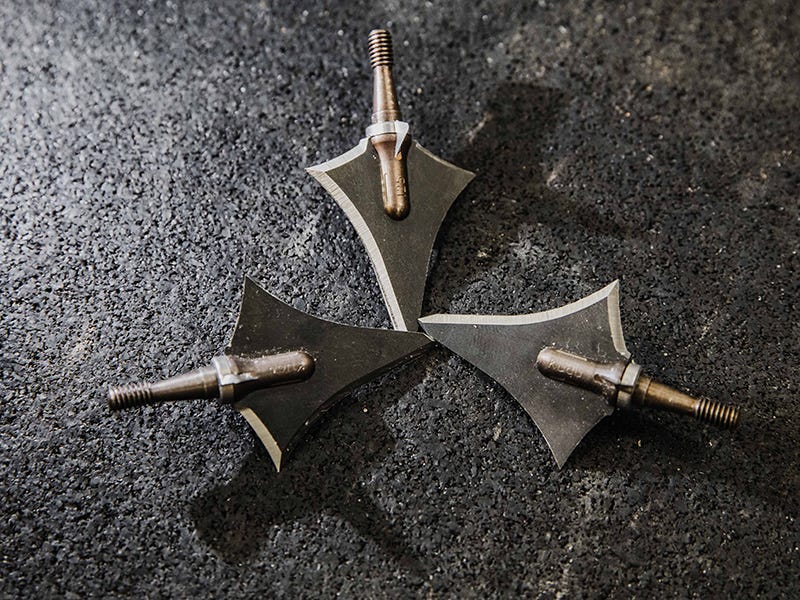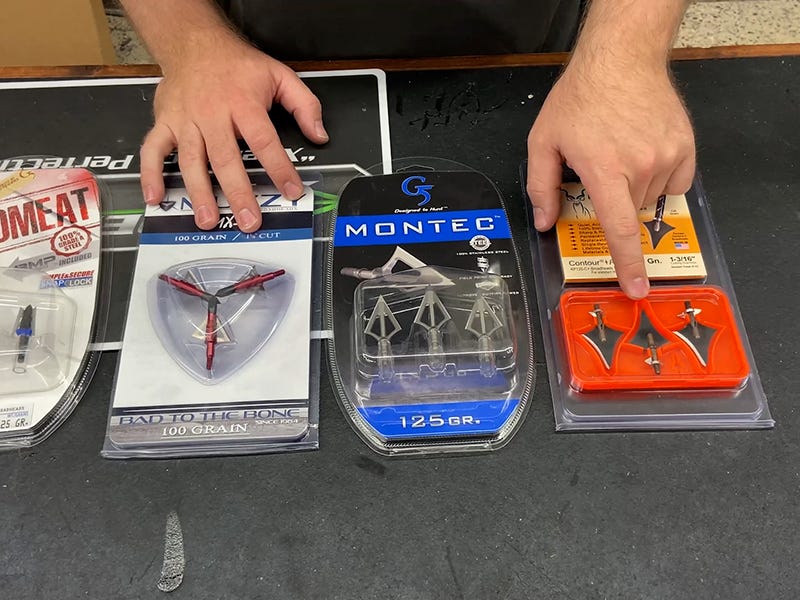Broadheads - What's the Difference?

Expandable or Fixed-Blade, It's in the Name.
Expandable or fixed-blade, when it comes to understanding the difference of both, it's in the name. Watch and learn as we share our best tips in helping you learn the differance between broadheads.
Video Transcription
Hey guys, Ken here with North 40 Outfitters, Lead Archery Tech at our West Great Falls location. Today, we're gonna go over a couple of different broadheads we have to offer at North 40. So, the two big differences between broadheads that we carry are expandable broadheads and fixed-blade broadheads, and the names kind of summarize the main differences between the two.
What's the Difference Between Fixed-Blade and Expandable Broadheads?
Fixed blades, the blades are always in the active position. They don't move. Expandable broadheads, the blades tuck back to a more sleek and aerodynamic design so there's less wind drift created. And then when it impacts the target a mechanism deploys that allows the blades to open up and gives you a much larger cutting diameter. Kind of going on the difference between the two types of expandables that we carry.
Gearing up? Shop all archery HERE.
There's a couple of other deploying mechanisms, but the two that we carry there's a collar system. So basically the arrow, the tip of the arrow, impacts, the blades deploy from the collar. There's a retention collar back here that once it hits the target, it's enough, basically, pressure to deploy the blades out of the collar and into the open position. And then with this guy, it has to penetrate a little bit further but it uses an o-ring to retain the blades in flight, and then once it hits and the little arms here hit the target, it basically slices open the o-ring, deploys the blade. So, the blades don't deploy right on impact like this one will but you're still, both of them, have pretty solid setups


Two-Blade, Three-Blade, Four-Blade Explained
As far as your flick fixed-blades go, there's quite a few differences among fixed-blades. So, big differences are you're gonna have options between the two-blade broadhead, a three-blade broadhead, and a four-blade broadhead. And then amongst those differences, in the two-blade world, you're gonna have single-bevel broadhead and a double-bevel broadhead. So these, here, are a single-bevel. So, when you look at it, they're sharp on one side but not on the other. So, there's one edge that's not sharp. And the idea is that it kind of encourages the broadhead to continue to rotate. It allows the tip to kind of act like a chisel point and kind of snap bone when it impacts with bone.
On this three-blade, this is what's called a cut-on contact style broadhead. So, the blade runs from the very tip of the broadhead all the way to the back. So, basically on lower poundage setups or setups that don't impact quite as hard, this is just gonna give you more penetration. If you do impact bone, it may have slightly more chance of glancing. But overall, really popular broadheads amongst fixed blades. They work really well. And for people that don't have a lot of kinetic energy in their setup, this is a really good broadhead. It's gonna give you more penetration.
Want to learn more? Discover more tips and techniques HERE.
And then on this floor blade, you can see this is a chisel point ti. So, the idea is that it's gonna break bone when it impacts. It's going to have less chance of deflecting off of bone, and then the blade angles are a little steeper and a little shorter. So, it is gonna require more force to push the broadhead through the target. If you have more questions or you need help with anything, please feel free to swing by your local North 40 Outfitters or check us out online at north40.com.
